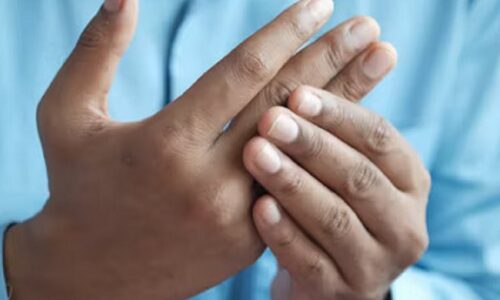
ICD-10 Code for Onychomycosis – B35.1
Onychomycosis, or fungal nail infection, is a common condition impacting many globally. It’s a fungal infection of the nails caused by various fungi. Accurate coding in medical records is crucial for diagnosing and treating onychomycosis, benefiting patient care, research, and insurance reimbursement. This article explores ICD-10 coding for onychomycosis, serving as a detailed guide for healthcare providers.
What is ICD-10?
ICD-10 stands for International Classification of Diseases, 10th Revision. It’s a codebook used globally by doctors, hospitals, and insurance companies to classify illnesses and injuries. This system ensures a universal medical language, simplifying disease tracking, healthcare management, and treatment development.
Deciphering Onychomycosis Codes
Have you ever wondered what those letters and numbers your doctor mentioned about your nail fungus mean? They’re likely an ICD-10 code, a system for categorizing medical conditions. This code helps track, plan treatment for, and bill for your onychomycosis (nail fungus). Understanding the basic format of the code (B35.1 or B35.9) can give you insight into your condition and help you feel more informed about your health.
Primary Codes for Onychomycosis
Among the main codes used for diagnosing onychomycosis are:
- B35.1 – Tinea unguium (onychomycosis)
- B35.3 – Black dot onychomycosis
- B35.4 – Distal subungual onychomycosis
- B35.5 – Proximal subungual onychomycosis
- B35.6 – Candidal onychomycosis
Each code specifies particular characteristics or causes of onychomycosis, aiding precise coding and treatment planning.
Understanding the Code Breakdown
Both codes follow a similar format:
- The first letter (B): Indicates a fungal infection (mycosis).
- The first two numbers (35): Narrow it down to specific fungal infections of the skin and appendages, which includes nails.
- The decimal point (.): Separates the main category from a further sub-category.
- The number after the decimal (1 or 9): Specifies the exact type of fungal infection. In our case, “.1” indicates dermatophytes, while “.9” represents other fungi.
Why Use ICD-10 Codes?
While the codes may appear cryptic, they serve several important purposes:
- Accurate Diagnosis Tracking: ICD-10 codes ensure doctors accurately record onychomycosis cases, improving understanding of the disease’s prevalence and spread.
- Effective Treatment Planning: By identifying the specific fungal cause (dermatophyte or other), doctors can choose the most effective treatment approach.
- Insurance Billing: ICD-10 codes are crucial for medical practices to bill insurance companies for diagnosing and treating onychomycosis.
- Research and Development: Analyzing data coded as onychomycosis helps researchers understand the disease and develop better treatments and preventive measures.
Treatment Options
Treating onychomycosis involves various methods tailored to each case’s severity, patient preferences, and other health conditions.
- Topical Therapy: For mild to moderate cases, antifungal nail lacquers or solutions are applied directly to the infected nails.
- Systemic Therapy: Severe or persistent infections may require oral antifungal medications like terbinafine or itraconazole to target the fungus throughout the body.
- Surgical Intervention: Extensive or stubborn infections may need surgical procedures such as nail avulsion or debridement to remove infected tissue.
- Adjunctive Measures: Additional treatments like nail debridement, laser therapy, and educating patients on foot hygiene can complement primary therapies, improving treatment effectiveness.
Beyond the Code: Additional Information
While the ICD-10 code categorizes your condition, additional details are important:
- Severity: How many nails and to what extent are they affected?
- Nail type: Are fingernails or toenails involved?
- Underlying conditions: Do you have diabetes or a weakened immune system?
- Past treatments: Have you tried any medications or therapies before?
Conclusion
The ICD-10 code for onychomycosis (B35.1 or B35.9) may seem complex, but it’s crucial in healthcare. Understanding its purpose can empower you in your healthcare journey. Remember, it’s just one part of the puzzle. Discussing your situation with your doctor is key for the best diagnosis and treatment plan.
Visit here for treatment: Children’s Health | ICD-10-CM Codes
Mohd Shuaib
Mohd Shuaib is a dedicated and knowledgeable author with a strong background in the field of health and medical sciences. With a Master of Science degree and a passion for writing, Shuaib has established himself as a reputable content writer at DiseaseInfoHub, a prominent platform for disseminating accurate and up-to-date information about various diseases and health-related topics.




